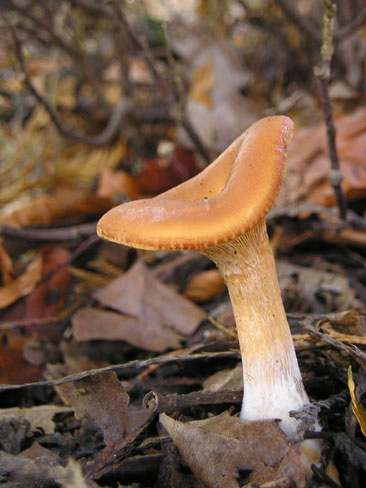Geoglossum cookeianum - Black Earth Tongue
This time last year I took a break on the East Coast of England, Norfolk.
I downed tools from writing the Field Guide to the Mushrooms of Britain and Europe and spent 5 days wandering around the deserted beaches and woodland in East Anglia.
Therapeutic it was too. Decent weather and light and I managed to find a few new mushrooms to photograph. One of them being Black Earth Tongue.
This grows mostly in coastal regions amongst sandy soil and in short grass. I nearly missed it. Despite being black it is not easy to spot and could easily be mistaken for dried seaweed.
Description: up to 7 cm tall and 2 cm wide. Dull black, elongated tongue-shaped and smooth with a blunt and curved tip. The stem is very short. The more dry the weather the more brittle the texture. It was growing in small groups in short grass in sandy soil. To be found usually May - November. It is uncommon.
It rather fascinated me. An all black fungus with a nice shape and my first find in a decade of searching. Not a disappointment. This was found at a location called Snettisham Scalp.
Friday 25 November 2016
Tuesday 22 November 2016
Peziza echinospora - Charcoal Cup
Peziza echinospora - Charcoal Cup
I recently went walking around the remains of an old coal open-cast mining site which is now a series of paths and trails and has a nice mix of trees including silver birch and grazing ground for cattle. It was quite fascinating pottering about such a sparse landscape and little mounds of black coal deposits. I also came across several old bonfire sites. I'm always poking about in these sites because I want to find Bonfire Inkcap. Not that day though, but I did come across Charcoal Cup.
This is 3-8 cm across and when young is cup-shaped. With maturity it spreads out a little with the margin becoming incurved. The inner surface is shiny, smooth and dark reddish brown. The outer surface is more pale brown and has a granular/scurfy texture. This fungus is attached flat to the ground, having no stem. It grows in small groups that can be spread out on burnt wood and ground during the Autumn and Spring.
I recently went walking around the remains of an old coal open-cast mining site which is now a series of paths and trails and has a nice mix of trees including silver birch and grazing ground for cattle. It was quite fascinating pottering about such a sparse landscape and little mounds of black coal deposits. I also came across several old bonfire sites. I'm always poking about in these sites because I want to find Bonfire Inkcap. Not that day though, but I did come across Charcoal Cup.
This is 3-8 cm across and when young is cup-shaped. With maturity it spreads out a little with the margin becoming incurved. The inner surface is shiny, smooth and dark reddish brown. The outer surface is more pale brown and has a granular/scurfy texture. This fungus is attached flat to the ground, having no stem. It grows in small groups that can be spread out on burnt wood and ground during the Autumn and Spring.
 |
| Young Charcoal Cup |
 |
| Mature example |
 |
| Showing scurfy outer surface |
Wednesday 16 November 2016
BBC Radio 4 The Life Scientific - Professor Lynne Boddy - Fungal Ecologist
If you are interested in hearing an in-depth interview with Professor Lynne Boddy a fungal ecologist
please follow the link:
http://www.bbc.co.uk/programmes/b082hfw9
Thursday 10 November 2016
Amanita muscaria - Fly Agaric
Amanita muscaria - Fly Agaric
The Fly Agaric is a fungus that when encountered excites people. It is brightly coloured and begs to be photographed. Although this is a very common fungus it is not always possible to get really good photographs as the cap soon becomes nibbled by slugs or other things.
This year I have seen the most amazing Fly Agaric in various stages from young to mature and these examples are worth sharing.
First here is a description. Cap up to 20 cm in diameter, bright scarlet and covered with white warts that can initially appear pale lemon. These warts can be absent as they can get washed off by the rain. The gills are white and the stem is also white being up to 20 cm tall. The stem has a large, loose pendulous ring and the base is bulbous and has ridges. It is very common and can be found late Summer to Autumn amongst birch trees. It is poisonous.
The Fly Agaric is a fungus that when encountered excites people. It is brightly coloured and begs to be photographed. Although this is a very common fungus it is not always possible to get really good photographs as the cap soon becomes nibbled by slugs or other things.
This year I have seen the most amazing Fly Agaric in various stages from young to mature and these examples are worth sharing.
First here is a description. Cap up to 20 cm in diameter, bright scarlet and covered with white warts that can initially appear pale lemon. These warts can be absent as they can get washed off by the rain. The gills are white and the stem is also white being up to 20 cm tall. The stem has a large, loose pendulous ring and the base is bulbous and has ridges. It is very common and can be found late Summer to Autumn amongst birch trees. It is poisonous.
 |
This photograph showing a young example with the scarlet cap just beginning to be visible |
 |
| This photograph showing a semi-mature example |
 |
| This photograph showing a mature example |
 |
| This photograph showing the pendulous ring |
 |
| This photograph showing the bulbous base with the ridges |
Subscribe to:
Posts (Atom)

